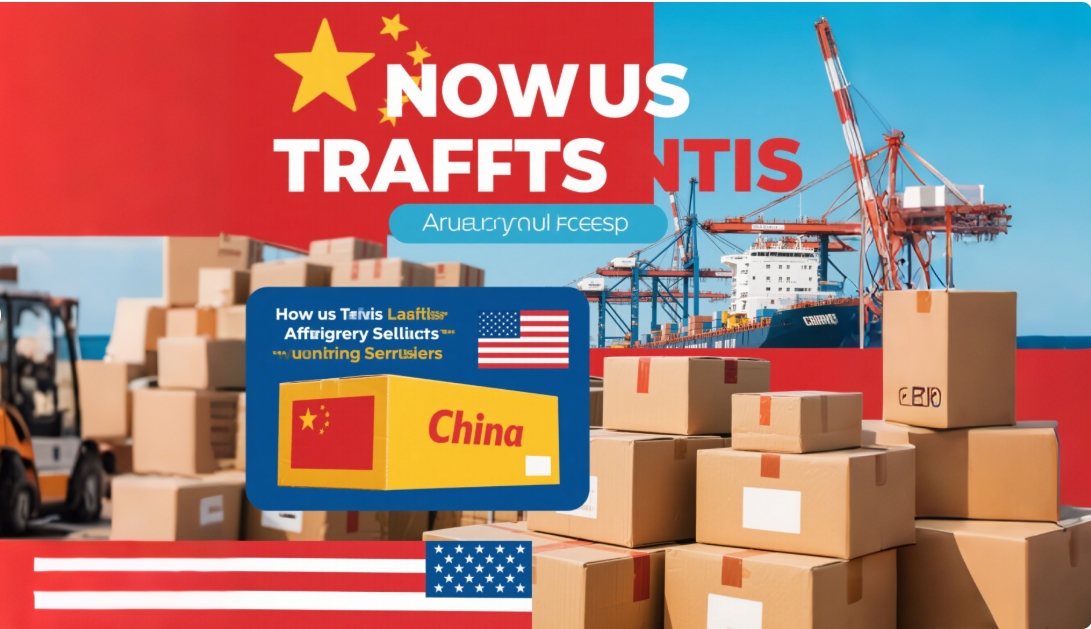Login
How New US Tariffs Affect Sellers Shipping Goods from China

The recent announcement of new tariffs by the US government has sent ripples through the global trade community, particularly impacting cross-border e-commerce sellers, manufacturing companies, and retailers who rely on shipping goods from China to international markets. These tariffs, aimed at protecting domestic industries, have significant implications for businesses involved in cross-border trade.
Understanding the New Tariffs
On April 2, 2025, President Donald Trump announced a series of new tariffs on imported goods. These tariffs include a universal 10% tariff on all imported goods, higher tariffs on specific countries perceived to have unfair trade practices, and a 25% tariff on all foreign-made automobiles. For cross-border e-commerce sellers, this means increased costs for importing goods into the US, which can affect pricing, profitability, and overall business strategy.
Key Impacts of the New US Tariffs on Sellers
1. Increased Product Costs
The new tariffs raise the cost of importing goods from China, affecting e-commerce sellers who source products such as electronics, textiles, and machinery. This could squeeze profit margins, forcing sellers to either absorb the costs or pass them on to consumers.
2. Supply Chain Adjustments
Many businesses may need to rethink their China sourcing strategy—either by negotiating better prices with suppliers, seeking alternative manufacturing hubs (like Vietnam or Mexico), or optimizing logistics and shipping routes to minimize expenses.
3. Competitive Pricing Challenges
With higher import duties, Amazon FBA sellers and Shopify store owners may struggle to maintain competitive pricing. Sellers must analyze their product categories to determine which items are most affected and adjust pricing strategies accordingly.
4. Customs Clearance Delays
Stricter tariff enforcement could lead to more customs inspections, potentially causing delays in international shipping. Sellers should work with reliable freight forwarders to ensure smooth clearance and avoid stock shortages.
5. Opportunities for Diversification
While tariffs pose challenges, they also encourage businesses to explore alternative sourcing options or diversify product lines to reduce dependency on heavily taxed categories.
How to Mitigate the Impact of US Tariffs
- Review Your Product Portfolio: Identify which items face the highest tariffs and assess whether alternative suppliers or product variations are viable.
- Optimize Shipping Methods: Consolidate shipments, use sea freight for bulk orders, or leverage cross-border e-commerce fulfillment solutions to reduce costs.
- Stay Updated on Trade Policies: Follow US-China trade news to anticipate further changes and adjust business strategies proactively.
- Work with a Trusted Logistics Partner: A reliable China-based freight forwarder can help navigate customs regulations and find cost-effective shipping solutions.
Final Thoughts
The new US tariffs on Chinese goods present both challenges and opportunities for cross-border sellers and global retailers. By staying informed and adapting sourcing and logistics strategies, businesses can minimize disruptions and maintain a competitive edge.
Need Help with Shipping from China?
If you have any questions or need assistance with your logistics and shipment from China, don’t hesitate to contact us. At Easy China Warehouse, we specialize in helping e-commerce sellers, manufacturers, and retailers streamline their supply chains and reduce costs—ensuring smooth deliveries to the US and global markets.
Let’s navigate these changes together—reach out today for expert support!
